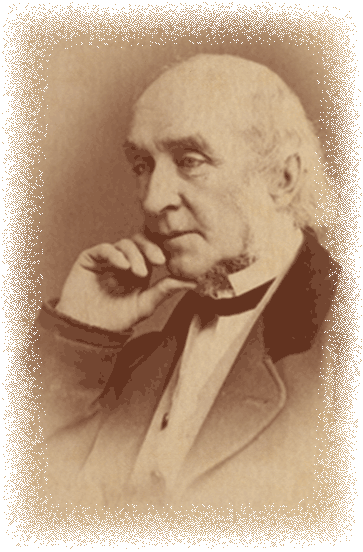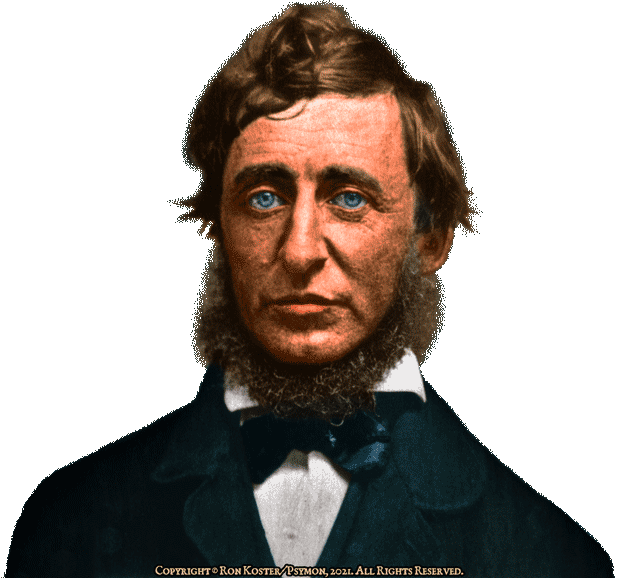Transcendence

[William] Ellery Channing
(1817–1901)


Biographical Sketch
by Ann M. Woodlief
Ellery Channing was not the most illustrious of the transcendentalists except perhaps for his eccentricity. Indeed, he himself said in middle age: “Dull I came upon the planet, untalented, the one talent still in that tremendous napkin, out of which I have never been able to unwrap it and where it is still like to be for all I can discern thro its folds.” [1]
His main talent — and it was considerable — seems to have been as a friend, to Emerson, Alcott, and Hawthorne, and especially with Thoreau, his fellow saunterer and Concord “character.” In a group which cherish friendship and conversation, his wit and insights were cherished.
His talk dazzled; his perceptions encouraged; his poetry moved them; in specific ways, he made daily life intellectual and esthetic for his friends. Repeatedly, he did for them what he could not do for himself — he called forth genuine poetry. the movement of a ripple, the greenness of a fern, the notes of a wood bird passed through the alembic of his conversation. Even the obvious disparity between imaginative talk and mediocre verse showed his friends that the life being lived was more genuine than the abstractions of mere literary performance. [2]
Channing was born in 1817 to a Professor of Obstetrics at Harvard and like his uncle, Dr. Channing, was named for his great-grandfather, a Signer of the Declaration of Independence, one of many distinguished forbearers. However, his world was disrupted at five years when his affectionate mother died and he was sent to live with cousins; his lifelong loneliness, depression, and moodiness may have its source here. His college career was noted primarily for his failure to adapt and the young rebel did not survive his freshman year. He studied law briefly, but found the reading of poetry at the Boston Athenæum more exciting. In 1835 he began publishing some rather erratic essays and verses as Hal Menge; placing one in the New England Magazine convinced him he was a true poet, thus choosing his “profession,” which would pay little. In 1839 he went to Illinois to live in a small but floorless house and to farm, an experiment his friend Thoreau would attempt more successfully years later.
Excited by transcendental ideas of the German Romantics and Emerson’s Nature, he began sending Emerson his poems, and Emerson obligingly published them in The Dial. Soon after, he met Ellen Fuller, sister of Margaret Fuller, in Cincinnati and they rather quickly decided to marry in 1841, against strong opposition from family and friends. He was poorly suited for marriage, emotionally or financially, and in 1853, after 4 children and much emotional turbulence, Ellen separated from him. She was persuaded to return and she bore another son, but died soon after. The children were all farmed out to relatives and friends to raise, rarely seeing their father.
As a poet, Channing could be fluent and pictorial, and his early poems were full of Transcendental abstractions. Thoreau termed his style “sublime-slipshod.” Perhaps his most significant contribution was not poetry at all, but his biography of his friend of twenty years, Thoreau, the Poet-Naturalist in 1873. He survived primarily through the generosity of his family and friends. In 1876 Emma Lazarus recorded her impression of him as “a pathetic, impossible creature, whose cranks and oddities were submitted to on account of an innate nobility of character,” an opinion shared by all of his friends. [3] He remained Emerson’s close friend and walking companion, writing an imaginary dialogue among Emerson, Lowell, and himself called “Critics of Literature,” a light work full of puns, adding to his great stack of unpublishable manuscripts of prose and poetry. His final project, personally sewn together, was a “Manual of Words and Phrases (Chiefly English) in Great Part Recent or Obsolete.” Dying in 1901, he joined his old friends in Concord’s Sleepy Hollow Cemetery.

Selected Poems
The Earth Spirit
Hymn of the Earth
Nature

Notes
Biographical sketch copyright © Ann M. Woodlief, 2014.
Used with permission from American Transcendentalism Web.
www.transcendentalism.org 
❦
Questions? Comments? Bug report?
☞ Contact Me! ☜
❦
Acknowledgements
All original text, graphics and web deisign of this entire site
are copyright © Ron Koster/Psymon, 2021 (except as otherwise noted)
and may not be reproduced or distributed in any manner
without explicit permission.
See: A Note on Copyright.
All Rights Reserved.
|





